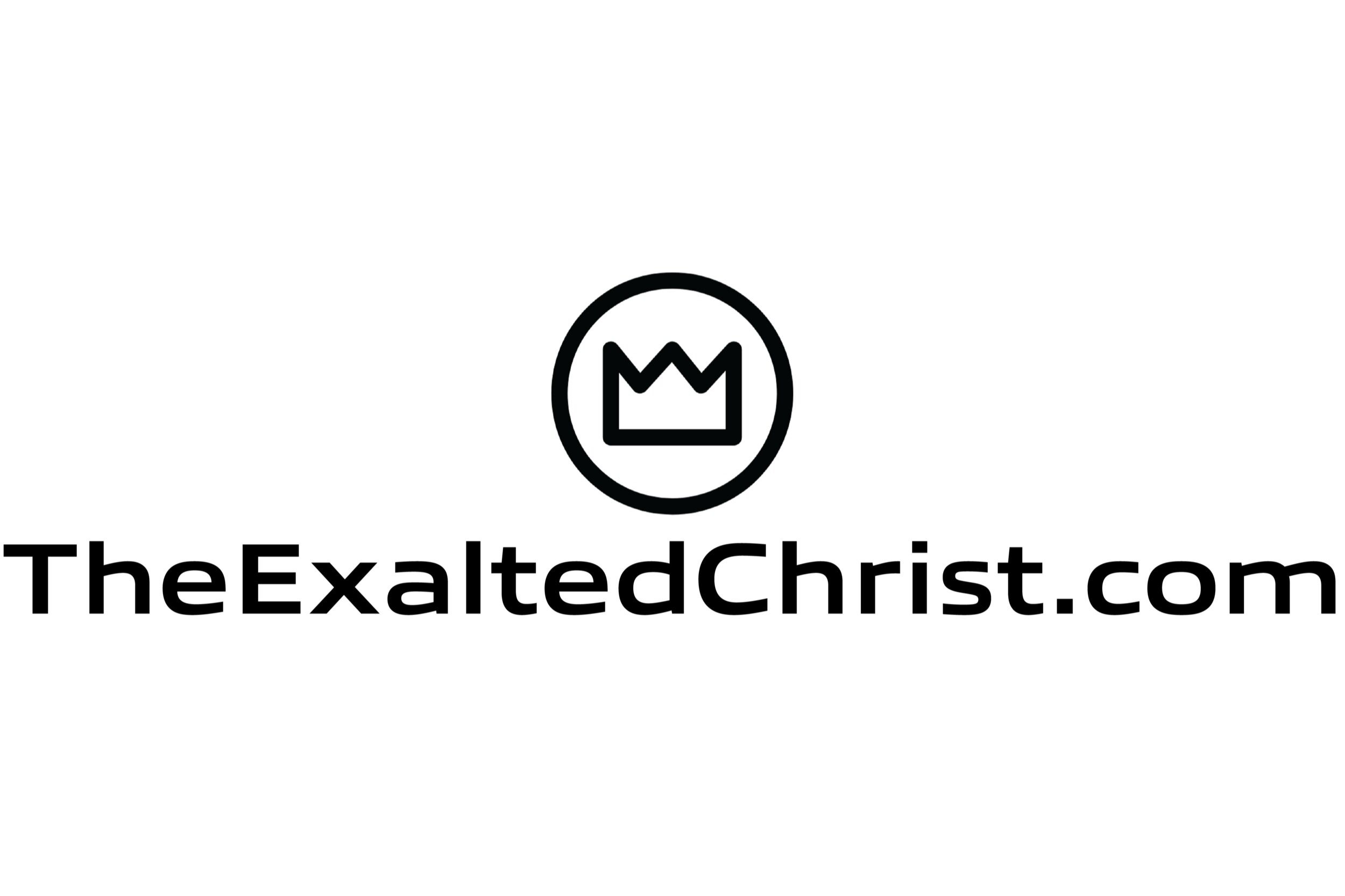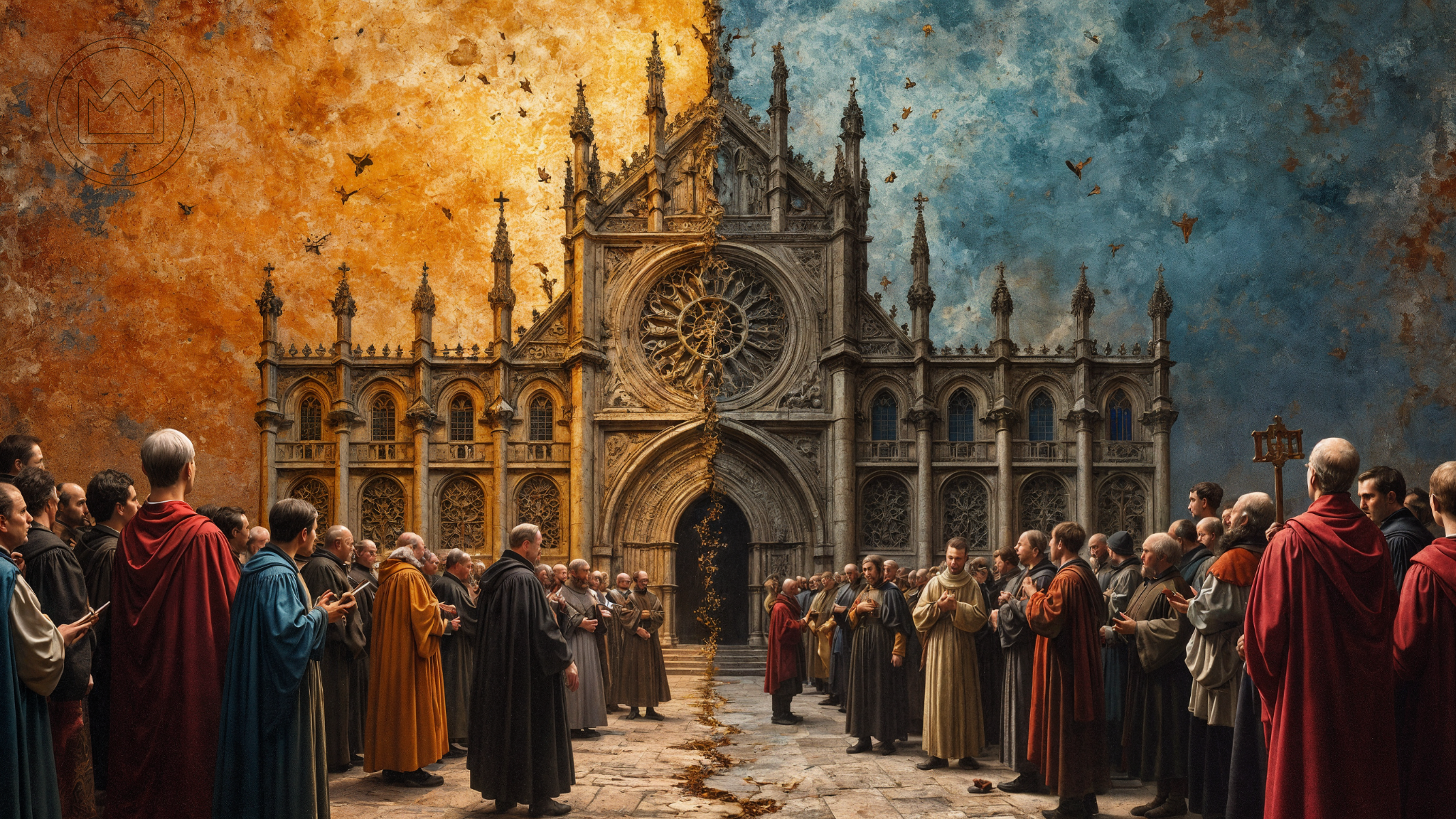The Protestant Reformation
The Protestant Reformation Explodes (1517-1648)
Part 10 of 12 in the Church History Series
On October 31, 1517, an obscure German monk nailed a debate challenge to a church door in Wittenberg. Martin Luther expected a scholarly discussion about indulgences. Instead, he ignited a revolution that would permanently fracture Western Christianity, topple kingdoms, and transform how millions understood salvation. The Protestant Reformation had begun.
Understanding the Reformation: Multiple Perspectives
Before diving into events, we must acknowledge that people interpret the Reformation differently:
Three Views of the Reformation
Protestant View: A necessary recovery of biblical truth. The church had buried the gospel under human traditions. Reformers heroically restored salvation by grace through faith alone.
Catholic View: A tragic schism driven by Luther's pride and German politics. The unity Christ prayed for was shattered. Legitimate concerns about corruption didn't justify dividing the church.
Secular View: An inevitable socio-political revolution. Rising nationalism, economic changes, and new technology made medieval religious unity unsustainable. Theology provided the vocabulary for deeper shifts.
Truth likely includes elements from all three perspectives.
Martin Luther: The Reluctant Revolutionary (1483-1546)
Luther never intended to split the church. A devout Augustinian monk, he sought salvation through extreme asceticism—fasting, freezing, confessing for hours. Yet peace eluded him. "I hated the righteous God who punishes sinners," he later confessed.
The Tower Experience
While studying Romans 1:17, Luther experienced breakthrough. "The righteous shall live by faith" didn't mean God demands righteousness—God gives righteousness through faith! Luther felt "born again" and "entered paradise through open gates."
This discovery—justification by faith alone—became Reformation bedrock.
The Indulgence Controversy
In 1517, Dominican friar Johann Tetzel arrived near Wittenberg selling indulgences to fund St. Peter's Basilica. His sales pitch appalled Luther:
"As soon as the coin in the coffer rings,
The soul from purgatory springs!"
Luther's 95 Theses challenged not just abuse but the theology behind indulgences. Key points included:
- Repentance is internal, not external
- The pope cannot remit guilt, only God can
- Buying forgiveness corrupts the gospel
- The treasury of merit doesn't exist
Thanks to printing, the Theses spread across Germany within weeks. Luther became an overnight sensation.
The Break with Rome (1518-1521)
Rome initially dismissed Luther as "a drunken German who will think differently when sober." But as his influence grew, responses escalated:
- 1518: Cardinal Cajetan demands recantation; Luther refuses
- 1519: Leipzig Debate with Johann Eck; Luther questions papal authority
- 1520: Papal bull Exsurge Domine threatens excommunication
- December 1520: Luther burns the papal bull publicly
- January 1521: Excommunication finalized
The Diet of Worms: "Here I Stand"
In April 1521, Luther faced Emperor Charles V at the Diet of Worms. Shown his books, he was ordered to recant. After requesting time to consider, Luther returned with history's most famous defiance:
"Unless I am convinced by the testimony of the Scriptures or by clear reason (for I do not trust either in the pope or in councils alone, since it is well known that they have often erred and contradicted themselves), I am bound by the Scriptures I have quoted and my conscience is captive to the Word of God. I cannot and will not recant anything, since it is neither safe nor right to go against conscience. Here I stand, I can do no other. May God help me. Amen."
Charles V declared Luther an outlaw. Anyone could kill him without penalty. But Frederick the Wise of Saxony "kidnapped" Luther to Wartburg Castle, where he translated the New Testament into German in just 11 weeks.
Luther's Key Teachings
Lutheran theology crystallized around several core principles:
The Five Solas
- Sola Scriptura: Scripture alone is the highest authority
- Sola Fide: Justification by faith alone
- Sola Gratia: Salvation by grace alone
- Solus Christus: Christ alone as mediator
- Soli Deo Gloria: Glory to God alone
Additional distinctive teachings:
- Priesthood of all believers: Every Christian has direct access to God
- Two kingdoms: God rules spiritually through the gospel, temporally through law
- Bondage of the will: Humans cannot choose God without divine grace
- Sacraments: Only baptism and communion, not seven
The Swiss Reformation: Multiple Streams
While Luther reformed Germany, Switzerland developed three distinct reform movements:
Ulrich Zwingli in Zurich (1484-1531)
Zwingli began reforming Zurich independently of Luther. A humanist priest influenced by Erasmus, his approach was more radical:
- Removed all images and organs from churches
- Replaced Mass with simple preaching service
- Rejected anything not explicitly biblical
- Viewed communion as purely symbolic memorial
At Marburg Colloquy (1529), Luther and Zwingli agreed on 14 of 15 doctrinal points but split over communion. Luther insisted "This IS my body" meant real presence; Zwingli saw only symbols. This division prevented Protestant unity.
Zwingli died in battle (1531) defending Protestant cantons against Catholic forces—sword in hand, unlike Luther's protection.
The Anabaptists: Radical Reformation
Some of Zwingli's followers felt he hadn't gone far enough. In 1525, they began baptizing adult believers, earning the name "Anabaptists" (re-baptizers).
Anabaptist distinctives:
- Believer's baptism: Only conscious believers, not infants
- Separation of church and state: Kingdom of God distinct from worldly powers
- Pacifism: Following Jesus' commands literally
- Simple living: Sharing possessions, plain dress
- Church discipline: Pure church of committed believers
Both Catholics and Protestants persecuted Anabaptists viciously. Thousands died, often by drowning—cruel irony for those who baptized by immersion. Yet they persisted, becoming Mennonites, Hutterites, and later influencing Baptists.
John Calvin in Geneva (1509-1564)
Calvin, a French lawyer converted to Protestantism, became the Reformation's greatest systematizer. His Institutes of the Christian Religion (1536) provided Reformed theology's foundation.
TULIP: Calvin's Theology Summarized
- T - Total Depravity: Sin corrupts every human faculty
- U - Unconditional Election: God chooses the saved by His will alone
- L - Limited Atonement: Christ died specifically for the elect
- I - Irresistible Grace: The elect cannot resist God's call
- P - Perseverance of Saints: True believers cannot lose salvation
Calvin transformed Geneva into a "Protestant Rome"—a model city under God's law. His influence spread through:
- France (Huguenots)
- Netherlands (Dutch Reformed)
- Scotland (Presbyterians under John Knox)
- England (Puritans)
- America (Congregationalists, Presbyterians)
The English Reformation: Politics and Theology
England's break with Rome began with Henry VIII's marital problems, not theological convictions. Key phases:
Henry VIII (1509-1547): The Break
- Wanted annulment to marry Anne Boleyn and produce male heir
- Act of Supremacy (1534) declared king head of English church
- Dissolved monasteries, seizing vast wealth
- Maintained Catholic doctrine except papal authority
- Executed both Catholics (Thomas More) and Protestants (William Tyndale)
Edward VI (1547-1553): Protestant Reform
- Thomas Cranmer leads real Protestant changes
- Book of Common Prayer (1549, 1552) in English
- Forty-Two Articles define Protestant doctrine
- Images removed, clergy allowed to marry
Mary I (1553-1558): Catholic Reaction
- Restored Catholicism forcefully
- Burned 300 Protestants, earning nickname "Bloody Mary"
- Cranmer, Ridley, and Latimer martyred
- 800 Protestant leaders fled to Geneva
Elizabeth I (1558-1603): The Settlement
- Established moderate Protestant church
- Thirty-Nine Articles (1563) defined Anglican middle way
- Retained bishops and liturgy while affirming Protestant doctrine
- Puritans wanted further reform; Separatists gave up and left
The Catholic Counter-Reformation
Rome didn't passively accept Protestant losses. The Counter-Reformation combined internal reform with aggressive reconquest:
The Council of Trent (1545-1563)
This council definitively answered Protestant challenges:
- Scripture AND Tradition are authoritative
- Vulgate Latin Bible is official version
- Justification by faith AND works
- Seven sacraments confirmed
- Transubstantiation reaffirmed
- Purgatory, indulgences, veneration of saints upheld
Trent also reformed abuses:
- Bishops must reside in dioceses
- Seminaries established for priest education
- Sale of indulgences regulated
- Clerical morality enforced
New Weapons
The Jesuits (Society of Jesus): Founded by Ignatius Loyola (1540), they became Catholicism's shock troops through education, missions, and court influence.
The Inquisition: Reorganized to combat Protestant "heresy" with imprisonment, torture, and execution.
The Index: Prohibited books list, banning Protestant writings and controlling Catholic reading.
The Wars of Religion (1546-1648)
Theological division led to military conflict. Major wars included:
- Schmalkaldic Wars (1546-1555): Emperor vs. Protestant princes
- French Wars of Religion (1562-1598): Catholics vs. Huguenots
- Dutch Revolt (1566-1648): Netherlands vs. Spanish Catholicism
- Thirty Years' War (1618-1648): Devastating Europe-wide conflict
The Thirty Years' War: Christianity's Suicide
Beginning as Protestant-Catholic conflict in Bohemia, it became general European war. Devastation was apocalyptic:
- 8 million dead (up to 40% in some regions)
- Armies destroyed crops, spreading famine
- Plague followed armies
- Entire regions depopulated
- Cannibalism reported in besieged cities
The Peace of Westphalia (1648) established:
- Religious borders largely permanent
- State sovereignty over religious matters
- Effective end of Christendom ideal
- Beginning of secular international order
Reformation's Lasting Impact
The Protestant Reformation transformed not just Christianity but Western civilization:
- Religious diversity: One church became hundreds of denominations
- Bible access: Scripture translated into vernacular languages
- Individual conscience: Personal interpretation over institutional authority
- Universal education: Literacy to read Scripture
- Work ethic: All legitimate callings serve God
- Political theory: Resistance to tyrants, separation of powers
- Capitalism: Connections between Protestant ethics and economic development
Lessons from the Reformation
- Truth matters more than unity. Reformers chose division over compromising the gospel. While schism grieves God, false unity built on error grieves Him more.
- Reform requires courage. Luther, Zwingli, and others risked everything. Comfortable Christianity rarely changes history.
- Unintended consequences abound. Reformers didn't intend denominationalism, wars of religion, or secularization. Good intentions don't guarantee good outcomes.
- Power corrupts all sides. Protestant states persecuted dissenters just as Catholics had. The persecuted often become persecutors.
- God works through flawed people. Luther's anti-Semitism, Calvin's harshness, and Zwingli's violence remind us that God uses imperfect instruments.
Reflection Questions
- Was the Reformation's division worth the recovery of biblical truth? Why or why not?
- Which Reformation principle (sola scriptura, sola fide, etc.) most challenges contemporary Christianity?
- How can churches today pursue reform without unnecessary division?

